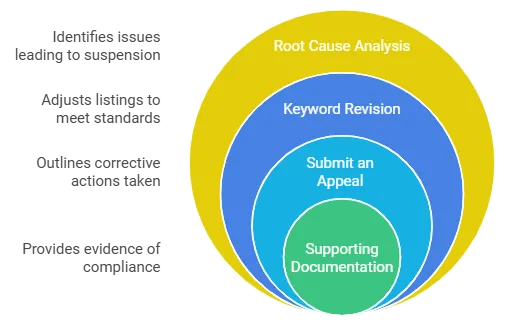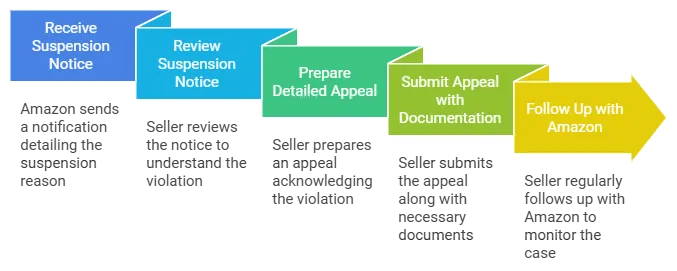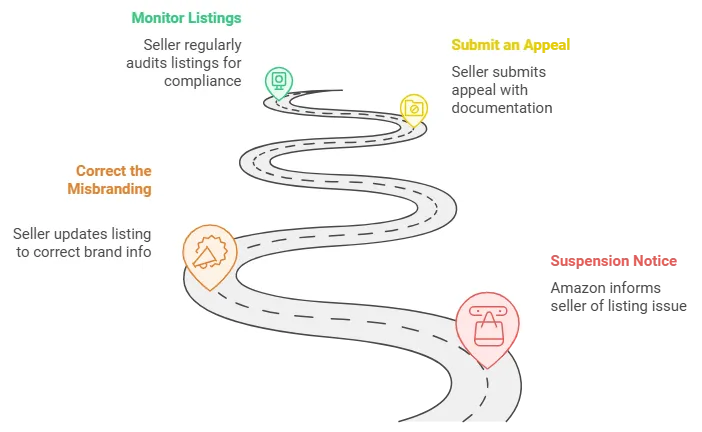How to Stay Compliant with Amazon’s Pesticide Regulations
How to Stay Compliant with Amazon’s Pesticide Regulations
Amazon’s stringent compliance guidelines for product categories like pesticides are designed to ensure customer safety and regulatory adherence. However, these policies often lead to account suspensions or listing deactivations, putting sellers in a challenging position. Sometimes, products can be flagged not because of their inherent nature but due to specific keywords used in product descriptions or titles that misclassify them as pesticides. Understanding how to avoid such issues, resolve suspensions, and reinstate accounts is crucial for Amazon sellers to maintain their businesses.
Understanding the Pesticide Suspension on Amazon
Why Does Amazon Suspend Seller Listings?
Amazon has strict regulations governing the sale of products categorized as pesticides or pesticide-related devices. This categorization is broader than many sellers realize and can encompass items like antibacterial cleaners, mosquito-repellent wristbands, and even some household goods making public health claims. Importantly, a product doesn’t need to be an actual pesticide to trigger Amazon’s suspension protocols; rather, certain keywords in the product listing can lead to automatic classification as a pesticide.
Example:
Words like “antimicrobial,” “disinfecting,” “insect-repellent,” “bacteria-killing,” or even “odor eliminator” can trigger Amazon’s algorithms to classify a product as a pesticide. If these terms appear in the title, bullet points, or product description without proper registration or certification, Amazon could flag and suspend the listing.
Amazon’s internal systems often detect inconsistencies between the product’s listing information and regulatory guidelines. The platform’s algorithm interprets certain words as indicating the product’s intended function, which could classify it as a pesticide even if it isn’t labeled as such by the seller. If flagged, Amazon may send a notification citing “violations of pesticide regulations” or “selling restricted products.” Many sellers don’t realize that using terms like “germ-killing” or “sanitizing” can inadvertently trigger a suspension.
Common Reasons for Pesticide Suspensions
Amazon’s strict monitoring can result in unexpected account deactivations or listing removals. The primary causes include:
1. Inappropriate Use of Specific Keywords
Amazon’s algorithm flags listings based on certain keywords that imply pesticide-related functions. Examples of such keywords include:
- “Antimicrobial”
- “Kills bacteria”
- “Insect repellent”
- “Mold removal”
- “Germ-killing”
- “Sanitizing”
- “Virus elimination”
These words, if used in titles, bullet points, or descriptions, can lead Amazon’s system to classify the product as a pesticide, regardless of its actual purpose. For example, listing an antibacterial surface cleaner as a “germ-killing solution” without the necessary EPA registration could result in suspension.
2. Lack of Pesticide Certification
If Amazon’s algorithm classifies a product as a pesticide due to keywords or claims made in its description, sellers may be required to provide an EPA Pesticide Registration Number or other relevant certifications. Failing to provide such documentation can lead to listing deactivation or account suspension.
3. Misleading or Inaccurate Claims
Sellers often unintentionally make unapproved claims in their product’s description, images, or inserts. This could include health claims or suggestions of public health benefits. If Amazon interprets such claims as pesticide-related, the listing may be flagged for compliance violations.
4. Failure to Complete Pesticide Training
Amazon mandates specific training for sellers offering products falling under the pesticide category. Failing to complete this mandatory training can trigger account issues or listing removals.
Key Takeaways and Best Practices for Pesticide Compliance
To prevent pesticide-related suspensions or deactivations, sellers should proactively focus on compliance. Here are some tips to stay ahead:
1. Review Amazon’s Pesticide Regulations
Familiarize yourself with Amazon’s guidelines and the types of products classified as pesticides. Items like pet grooming products, disinfectant sprays, and certain cleaning agents can fall under this category if they include claims related to pest control or public health.
2. Complete Mandatory Training
If your products fall into a pesticide-related category, complete Amazon’s required training. This training will help you understand the guidelines and avoid unintentional violations.
3. Avoid Trigger Keywords
Use careful phrasing in your product listings to avoid unintentional classification as a pesticide. Keywords like “virus protection,” “antibacterial properties,” and “mold-removal” should be avoided unless your product is registered appropriately.
4. Regularly Monitor and Update Listings
Periodically review and update your listings based on any changes in Amazon’s policies or relevant regulations. Remove outdated claims and ensure that any public health-related terms align with the necessary certifications.
How to Reinstate a Deactivated Amazon Seller Listing
How To Reinstate a Deactivated Amazon Seller Listing
Reinstating a deactivated or suspended account is a multi-step process requiring detailed communication with Amazon’s Seller Performance Team. Sellers need to focus on two aspects: addressing the compliance issue and drafting an effective Plan of Action (POA). Here’s what you should consider:

Consider the experience of a seller specializing in natural pest-repellent bracelets. Despite adhering to general health guidelines, their product listing was suspended due to the use of phrases like “repels insects” and “protects against mosquito bites.” After the suspension, the seller revised the entire listing, removing claims and keywords that suggested public health benefits, and submitted a detailed POA with supporting documentation. This comprehensive approach led to a successful reinstatement.
Key Takeaway: Removing inappropriate keywords and adopting a thorough compliance approach are crucial to reinstatement.
Frequently Asked Questions (FAQ) on Amazon Compliance Violations
Frequently Asked Questions
Frequently Asked Questions
Yes, Amazon’s algorithm and internal reviews can flag products based on their claims or descriptions, regardless of the seller’s intent. Always double-check that your product listings comply with the guidelines.
The reinstatement process can vary, typically taking anywhere from 7 to 14 days, depending on the complexity of the issue and the seller’s appeal quality. However, providing accurate information and well-documented evidence can help fast-track the process.
You can open a case with Amazon’s support team to challenge their classification. However, it’s vital to gather strong evidence, such as professional opinions or certifications, to support your claim.
Staying Compliant and Protecting Your Amazon Business
Facing a suspension or deactivation due to pesticide regulations can be daunting, but expert guidance can fast-track your reinstatement. At Amazon Sellers Appeal by ASA Compliance Group, led by Or Shamosh, we specialize in helping sellers navigate the complexities of Amazon compliance. Contact us today to book a consultation and protect your business from future disruptions.
By understanding Amazon’s pesticide regulations, carefully monitoring product listings for compliance, and proactively addressing potential issues, you can save your business from costly disruptions. Being vigilant and prepared will help you maintain smooth operations and build a reputation for reliability and trustworthiness.









